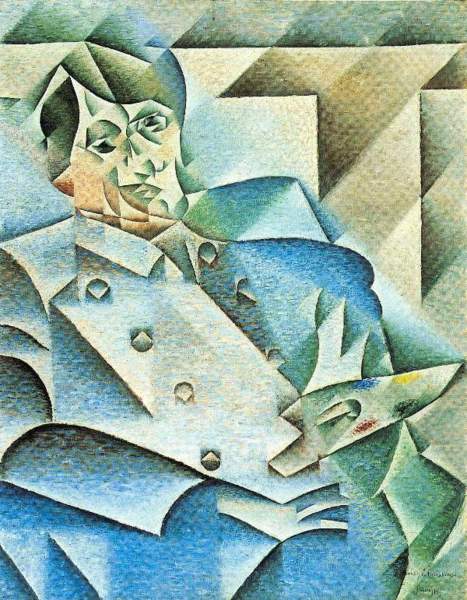【Paintings in Proust】 Homage to Pablo Picasso, Juan Gris, 1912 (p.90)
普魯斯特身處二十世紀初的遽變時代,除了日新月異的科技之外,在藝術史上同樣有驚人的發展:後印象派、野獸派、立體主義、表現主義、未來主義…
雖然普魯斯特不像波特萊爾那樣在美學評論上特別有所表現,但我們偶然可見的幾篇評論畫家的文章,還是可以確認他在藝術欣賞方面的眼光,關於這一點,我絲毫不曾懷疑。
底下摘要的這一段,道盡天才創作者難以見容於當代世人的殘酷事實以及普魯斯特坦然接受、處之泰然的睿智:
「天才為了躲避世人的忽視,對自己說,既然同時代人缺乏必要的時間距離,那麼為後代寫的作品就只能被後代讀懂(彷彿圖畫一樣,站得太近就無法欣賞)…朝著遙遠的真正未來拋過去。這個未來的時間是一部傑作的真正遠景。」

【TEXT】
And so it is essential that the artist (and this is what Vinteuil had done), if he wishes his work to be free to follow its own course, should launch it, there where there is sufficient depth, boldly into the distant future......No doubt it is easy to imagine, by an illusion similar to that which makes everything on the horizon appear equidistant, that all the revolutions which have hitherto occurred in painting or in music did at least respect certain rules, whereas that which immediately confronts us, he it impressionism, the pursuit of dissonance, an exclusive use of the Chinese scale, cubism, futurism or what you will, differs outrageously from all that has occurred before. (Within a Budding Grove)
因此,如果藝術家希望作品自闢道路的話,他必須——這正是凡德伊所做的——在有足夠深度的地方拋出它,朝著遙遠的真正未來拋過去。這個未來的時間是一部傑作的真正遠景,蹩腳的鑒賞家的錯誤在於忽視這未來的時間,而高明的鑒賞家有時帶著一種危險的苛求來考慮它。當然,如果從使遠處事物顯得朦朧不清的視覺出發,人們可能認為迄今為止的一切繪畫或音樂革命畢竟都遵循某些規則,而我們眼前的一切,如印象主義、對不諧調效果的追求、中國階次的絕對化、立體主義、未來主義,都粗暴地有別於前者...
(p.101 追憶似水年華 II 在少女們身旁 聯經版 1992)


 字體:小 中 大
字體:小 中 大

 字體:小 中 大
字體:小 中 大